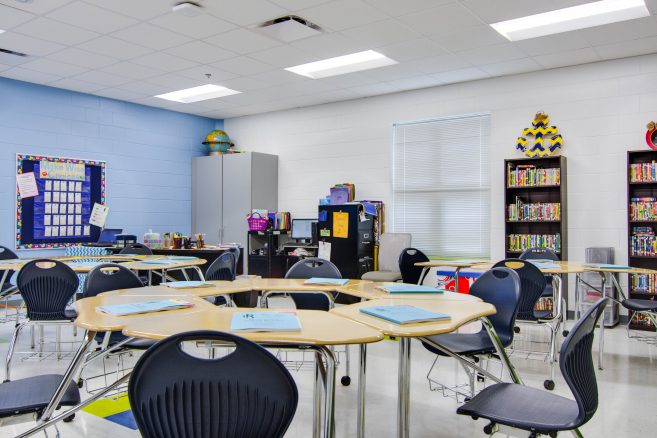Why Flexible Seating Works
By Academia Furniture
Posted February 19, 2019 in Tomorrow's Classroom
Every child is an individual. Options in the classroom are ideal.
Modern psychology says that each child is an individual, with unique needs, desires, learning capabilities, and personality traits. Yet, currently, most of our school system is still treating students as if they are all the same. One teacher, 24 students, 1 curriculum. And if the child doesn’t fit the mold? If they don’t learn like others do? If they need to move a little more than their classmates?
This is where flexible seating comes in.
It is vital to recognize the need for both traditional and modern classroom furniture. With some creativity, classrooms can easily be transformed into the collaborative working environments of teachers’ and students’ dreams. Whether it is a standing height desk, a soft seating area, a desk that can be pushed wheelbarrow style around the room, or uniquely shaped tables that encourage collaboration, keeping the students’ individual needs in mind is the most important way to enhance learning.
Working in such an environment enables the student to learn from their peers during group sessions, focus better, or have the teacher move from group to group to help those who are struggling. A flexible seating environment allows teachers to be more hands-on with the students that need it and give more independence to the students that can handle it. What works for one, may not work for others.
Here are a few ideas that can help shape the learning environment:
- Movement
Moving around the classroom is key in a modern classroom. Students can change their seat during transition times- moving from a traditional desk to a table where they can collaborate with others, or soft seating for comfort during individual work, reading or research time.
- Multi-use Furniture
With unique shapes, tables can create an environment of teamwork amongst students. Another way to foster the same level of collaboration is to have desks that can combine into pods of 3. 4. 5. 6 or 8. This increases the flexibility of the classroom and helps students transition into groups and then back to their own individual desks without needing extra furniture.
- Soft Seating Area
Creating a soft seating area opens up a lot of possibilities for the flexible classroom. From allowing students to choose their seating area, to creating a time for individual students to read or research while others work at tables in groups, soft seating areas empower students to find the right fit for their learning style. For those students who need to move around, having options helps them avoid getting bored in their seats all day or distracting others. Floor seating can often give students the freedom they need to focus instead of forcing themselves to sit still.
Giving students choices in the classroom leads to results
Being able to choose where one sits increases students’ engagement and attentiveness in class. They are empowered to make decisions and given agency over themselves and their location within the classroom. This helps to boost the learning environment and change the overall culture of the classroom.
Allowing students to utilize their own voice and decide where they sit creates an atmosphere of mutual trust and respect, this encourages them to learn in the style that suits them best. Students feel comfortable and ready to learn when having more control over their environment. This type of learning environment has proven results of higher academic achievements, higher test scores, and overall a happier student and teacher experience.
The Value of Flexible Seating
At Academia Furniture, our goal is to provide excellently designed and durable furniture that fits students’ needs. Although many in the education industry have discussed these ideas, there are still some people who do not understand the value of flexible seating in the classroom. By sharing some insights, we hope it might just change someone’s perspective.
